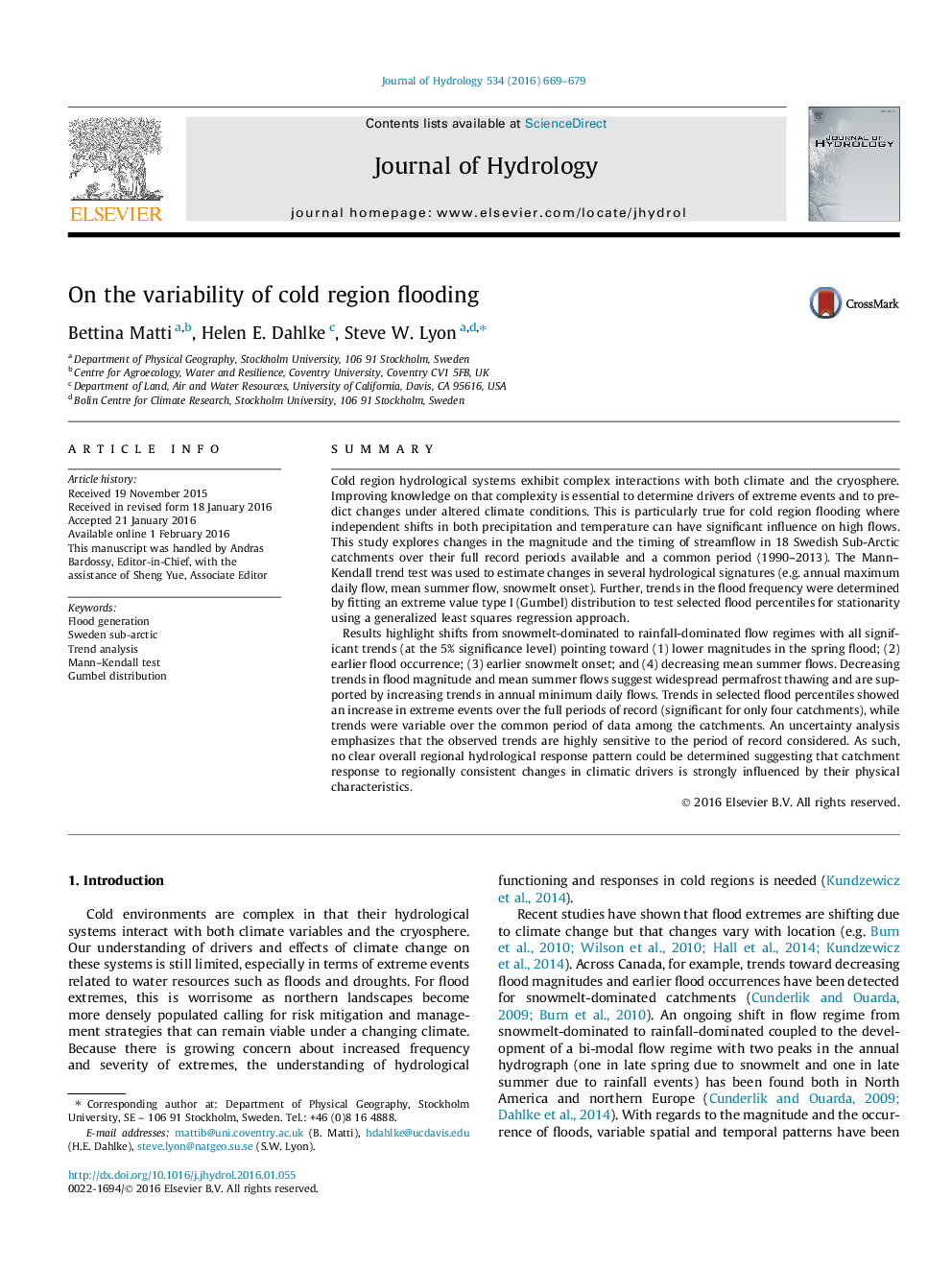| Article ID | Journal | Published Year | Pages | File Type |
|---|---|---|---|---|
| 6410409 | Journal of Hydrology | 2016 | 11 Pages |
â¢Trends in hydrological signatures show variability in cold region catchments.â¢Trends indicate shift from snowmelt-dominated to rainfall-dominated flow regime.â¢Variability at catchment scale can be explained by catchments' physical properties.â¢Results depend highly on the record period chosen.â¢Spatial variability in streamflow reflects the influence of permafrost.
SummaryCold region hydrological systems exhibit complex interactions with both climate and the cryosphere. Improving knowledge on that complexity is essential to determine drivers of extreme events and to predict changes under altered climate conditions. This is particularly true for cold region flooding where independent shifts in both precipitation and temperature can have significant influence on high flows. This study explores changes in the magnitude and the timing of streamflow in 18 Swedish Sub-Arctic catchments over their full record periods available and a common period (1990-2013). The Mann-Kendall trend test was used to estimate changes in several hydrological signatures (e.g. annual maximum daily flow, mean summer flow, snowmelt onset). Further, trends in the flood frequency were determined by fitting an extreme value type I (Gumbel) distribution to test selected flood percentiles for stationarity using a generalized least squares regression approach.Results highlight shifts from snowmelt-dominated to rainfall-dominated flow regimes with all significant trends (at the 5% significance level) pointing toward (1) lower magnitudes in the spring flood; (2) earlier flood occurrence; (3) earlier snowmelt onset; and (4) decreasing mean summer flows. Decreasing trends in flood magnitude and mean summer flows suggest widespread permafrost thawing and are supported by increasing trends in annual minimum daily flows. Trends in selected flood percentiles showed an increase in extreme events over the full periods of record (significant for only four catchments), while trends were variable over the common period of data among the catchments. An uncertainty analysis emphasizes that the observed trends are highly sensitive to the period of record considered. As such, no clear overall regional hydrological response pattern could be determined suggesting that catchment response to regionally consistent changes in climatic drivers is strongly influenced by their physical characteristics.
